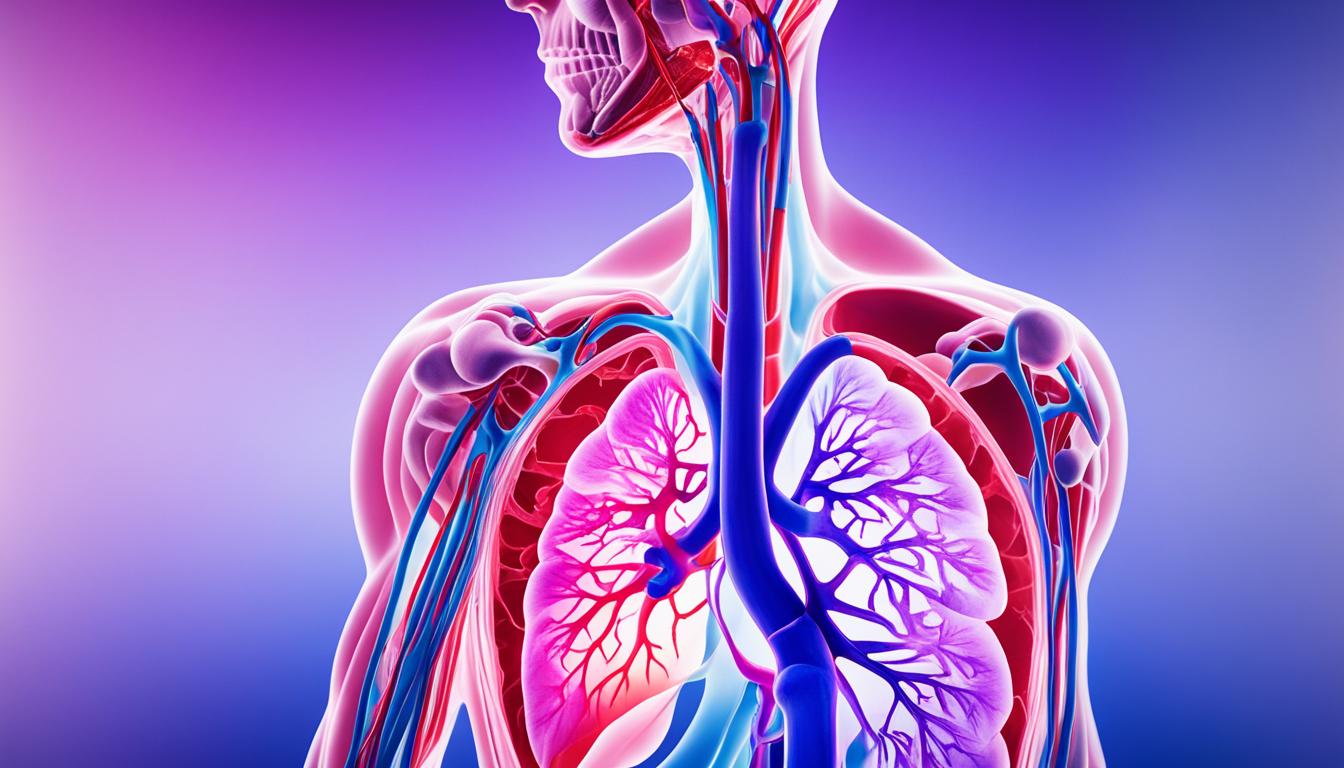Ebstein anomaly is a rare heart defect that can cause heart failure. It mainly affects the tricuspid valve. This can make the heart not work as it should and lead to serious health problems. It’s important to know about the signs, what causes it, how doctors find it, and how to treat it. This way, we can help people live better with this issue.
People with Ebstein anomaly might feel short of breath or very tired. They could also feel their heart beating fast, see their skin turn blue, and notice they’re swollen. These signs show that the tricuspid valve doesn’t work right. The valve should help blood flow well, but with Ebstein anomaly, the heart doesn’t work as it should.
We don’t know exactly what causes Ebstein anomaly. Yet, we think both genetic and environmental things play a part. Changes in genes or problems while a baby is growing in the womb might lead to this issue. Tests and advice on genetics can help people understand their risk of having a child with Ebstein anomaly.
To find out if someone has Ebstein anomaly, doctors do many tests. These include looking at the person, taking X-rays, and using machines to look at the heart’s electrical signals and pictures. This testing gives doctors a good idea of how bad the problem is and helps them choose the best treatment.
How Ebstein anomaly is treated depends on the person’s age and how serious their symptoms are. Some might just need to be checked often by a doctor and take medicines. Others might need surgery to fix the tricuspid valve or to put in a special device to help their heart beat normally. In very serious cases, the tricuspid valve might need to be replaced. There are also newer, less invasive ways to do this kind of surgery.
Living with Ebstein anomaly means seeing a doctor regularly and taking care of your heart every day. It’s important to listen to your doctor, eat well, keep active, and find ways to relax. If you do these things, you can feel better and have a full life, even with this condition.
Key Takeaways:
- Ebstein anomaly is a rare congenital heart disease that affects the tricuspid valve.
- Symptoms of Ebstein anomaly include shortness of breath, fatigue, heart palpitations, cyanosis, and swelling.
- The exact cause of Ebstein anomaly is unclear but is believed to involve genetic and environmental factors.
- Diagnosis involves physical examination and various imaging tests to assess the structure and function of the heart.
- Treatment options range from regular monitoring and medications to surgical interventions and valve replacement.
Understanding Tricuspid Valve Development: Embryology and Anatomy
The tricuspid valve (TV) is essential for blood flow between the right atrium and ventricle. It’s made up of three thin and translucent leaflets. These are called the anterior, posterior, and septal leaflets.
It also includes several papillary muscles for support. The tricuspid annulus, which holds the valve, changes shape as we breathe and during a heartbeat.
The TV grows from a special heart tissue called the endocardial AV cushion. If something goes wrong during this growth, it can result in Ebstein anomaly. Knowing how the tricuspid valve forms helps us understand and treat its diseases.
| Key Elements of Tricuspid Valve | |
|---|---|
| Leaflets | The TV consists of three leaflets, the anterior leaflet (AL), posterior leaflet (PL), and septal leaflet (SL). |
| Papillary Muscles | The TV has multiple papillary muscles, including the anterior, posterior, and septal papillary muscles. |
| Tricuspid Annulus | The tricuspid annulus is a dynamic structure that changes in shape and size during respiratory and cardiac cycles. |
Developmental Mechanisms Implicated in Tricuspid Valve Disease
Tricuspid valve (TV) diseases, like Ebstein’s anomaly, have roots in valve developmental issues. Ebstein’s anomaly shows a unique problem, where parts of the valve are out of place. Scientists are still learning why this happens.
During TV development, a key process is delamination. Delamination means the inside of the valve separates from the heart’s wall. This separation can cause the valve’s leaflets to form incorrectly, leading to Ebstein’s anomaly.
There’s also a big genetic component to TV diseases. Some specific genes, like NKX2-5 and GATA4, are linked to Ebstein’s anomaly. They are important for the tricuspid valve’s proper growth and work. Even MYC-7, usually tied to a different heart issue, has been found in Ebstein’s patients.
Learning about these genetic and growth factors is crucial for better treatments. This information helps in finding direct therapies for Ebstein’s anomaly and similar TV diseases. Researchers are working hard to understand how our genes and heart development are connected, aiming for new and better treatments.
Advancements in Diagnosis and Treatment of Ebstein Anomaly
Advancements in diagnosing and treating Ebstein anomaly have been impressive over time. The condition is spotted using fetal ultrasounds and advanced imaging methods. These include electrocardiogram, echocardiogram, and cardiac MRI. They help doctors pinpoint the issue and figure out how serious it is. This allows for the right treatment plans to be made.
There are many ways to treat Ebstein anomaly. This depends on each person’s situation. Treatments might include check-ups, taking medicine, surgery, getting a pacemaker, or replacing the tricuspid valve. Innovations in regenerative medicine and stem cell therapy offer new hope. They can help repair or replace the troubled valve.
These strides are uplifting for those affected by Ebstein anomaly, offering a brighter future. Ongoing studies look into genetic signs, better ways to see the heart, and fresh treatments. The aim is to improve people’s lives with more effective medical care. This would reduce symptoms and the risks of heart failure and irregular heartbeats. Ultimately, the goal is to boost patients’ well-being.

